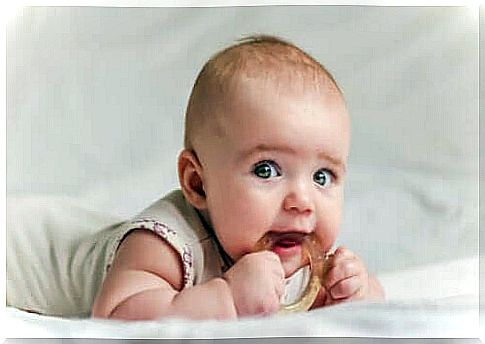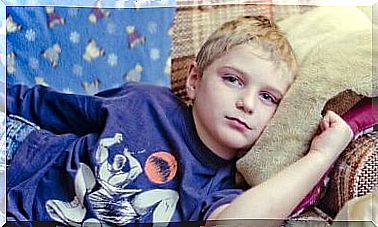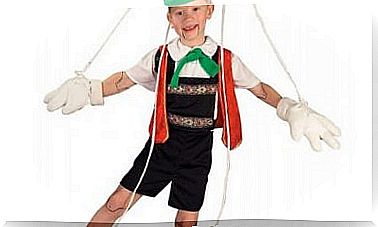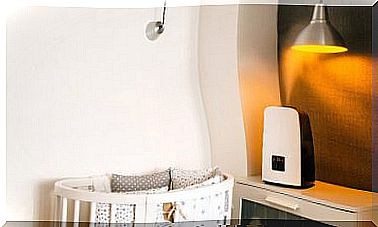Symptoms: When Baby’s Teeth Are Coming In

Sometimes, when children’s teeth start to come in, parents have a hard time knowing whether the symptoms are being caused by this or whether there is something else going on with the baby. For that reason, in this article, we’ll tell you what the main symptoms of teething are and how to help your child cope better.
When do teeth start to grow?
The appearance of baby teeth is a period known as deciduous dentition. Although each child is different, this phase usually starts around 6 months of age.
It could be that it starts before or after that, and even then it would still be within the normal range. However, it is advisable to go to the dentist if, after the first year, your baby has not had any teeth.
So this is a slow process. The first teeth to appear are the mandibular central incisors, followed by the maxillary central incisors. Then the lateral incisors are born. Finally, the canines and molars are born.
As mentioned, primary dentition is a slow phase and only around two years of age will all baby teeth be present.

Symptoms presented
The birth of teeth produces pain and irritation in the gums. Due to the age at which this occurs, babies are still unable to express what is happening. Most of the time, they get irritable, tearful, don’t want to eat, or wake up crying at night.
In addition to these nonspecific symptoms, there are others that give us more clues that what is really happening is teething. Two of the clearest symptoms that your baby’s teeth are starting to come in are:
- The baby starts to bite everything, including his hands. He does this because pressure on his gums soothes the pain for a while.
- Excessive salivation. The child begins to produce more saliva when the dentition begins to emerge.
When this occurs, parents can examine the baby’s mouth. You will be able to see the red, inflamed gums and small hard white spots on them, which will confirm that a baby tooth will be born soon.
On the other hand, symptoms such as fever, vomiting or diarrhea should not be attributed to teething. Thus, if this type of symptom appears, the pediatrician should be consulted.
How to calm the pain caused by teething?
There are several measures that can be taken to try to reduce the baby’s pain and, as a result, irritation and discomfort. Some of them are:
- As the child will want to bite everything, he can be given bites that are safe. If, in addition, we put the teether in the refrigerator for a while before offering it, the cold will alleviate the pain even more.

- The pacifier can also be cooled in the refrigerator for a calming effect, just like the bottle. Cold foods will make your child more appetizing for the same reason.
- With a clean finger, we can massage the baby’s gums. As we’ve already mentioned, pressure on the gums brings relief.
- If the child is severely affected or in pain, we can use the normally administered analgesic, such as paracetamol or ibuprofen.
In short
Primary teething is a stage that all children must go through. It can happen sooner or later depending on the child. The intensity of symptoms also varies from one baby to another.
It is important to be aware of other symptoms that are not characteristic of teething. Once we are sure that this is what is happening to the baby, we should remain calm and try to alleviate as much discomfort as this may cause.









